- Home
- Tom Clancy
Shadow Warriors: Inside the Special Forces Page 9
Shadow Warriors: Inside the Special Forces Read online
Page 9
Such is not the case with practitioners of unconventional war. Special soldiers have to be conscious of both the political implications of their military actions and the military implications of political actions—in fact, they have to be conscious of anything they do or say that could have an impact on the people they have been assigned to help and guide. Success lies far beyond the obtaining of military objectives.
This is why psychological operations and civic affairs1 have always been part of the special warfare toolkit. It is also why flexibility, resourcefulness, and political savvy were so important to Jack Singlaub, Aaron Bank, and the other Jedburghs. It is also, finally, why governments have come to find more and more uses for military forces that have these and associated capabilities.They are precision instruments, while tanks, artillery, and the other major combat arms are, by comparison, blunt—though far more powerful.
To put it another way: Special operations are conducted against strategic and operational targets that can’t be attacked in any other way. A strategic and operational target generally has to do with the center of gravity of an enemy (another term from Clausewitz), and that center of gravity can be physical, psychological, or economic. If conventional weaponry can’t deal with it ... special operations can.
When a nation finds it has a recurring need for these kinds of forces, then they form them into a special operations branch. During World War II, for example, the British knew they could never slug it out toe-to-toe with the German armies. Their special operations branch was intended to give them a lever that might even up the score.
By way of contrast, the Germans did not institutionalize special operations, and it’s a mystery why. It is equally mysterious that, when their armies were defeated, they did not organize guerrilla and partisan resistance to counter the Allied occupation of their country. Though they had extensive experience with partisans in the USSR, France, Yugoslavia, Greece, and elsewhere, and knew personally how partisans could make an occupying power suffer, the Germans did not themselves choose to organize such movements.
It is especially puzzling because German commando exploits were among the most daring and resourceful ever conducted. In 1940, for example, the fortress of Eben Emael, in southern Belgium at the junction of the Meuse River and the Albert Canal, was the most powerful fortress in Europe—heavily armored gun turrets above ground, the rest in hollowed-out underground galleries, and manned by 1,200 men. None of the Waginot Line fortifications came close to it. If the Germans hoped to attack west, toward the channel ports, or south, toward France, they had to overcome Eben Emael.
After six months of training in glider operations, as well as on a replica of the fortress itself, eighty German engineer-commandos, commanded by a sergeant, landed on the roof of Eben Emael in nine gliders and launched a carefully orchestrated attack—highlighted by the first-time-ever use of shaped charges in war—that resulted in the capture of the impregnable fortress thirty hours later. Shaped charges focus blast effects in order to penetrate armor, and are now very common in all kinds of anti-armor and deep-penetration-type weapons.
But then when the operation was over, the engineer-commandos went back into the Wehrmacht war machine. The Germans saw no recurring need for a standing special operations capability.
In 1943, after the Allied invasion of Italy, the Italians kicked Mussolini out of power and placed him in exile, under heavy guard, at an isolated mountaintop hotel, where it was believed no conceivable force could rescue him. The only access was by funicular railway. On September 13, however, another daredevil band of German glider commandos, led by one of the greatest of special operators, the Austrian Otto Skorzeny, landed a hundred yards from the hotel, overwhelmed the carabinieri guards, brought in a small Fiescier-Storch aircraft, and spirited the Duce away in it.
The commandos then returned to their regular units.
IN THE WILDERNESS
From 1946 to 1951, the Army maintained an interest in rebuilding an unconventional-warfare capability, and conducted many studies, but not much actually happened. Since there was a Ranger precedent, one study looked at the possibility of starting up a Ranger group that could carry out both a Jedburgh-like teaching-and-training mission and Ranger-type raids. Another study proposed creating a special operations force using refugee soldiers from Soviet satellite countries in eastern Europe, many of whom had extensive unconventional warfare experience fighting the Nazis. These men could join up under the provisions of the Lodge Act, which allowed foreigners to join the U.S. military services and, after two years, be granted citizenship. It would be a kind of American Special Forces Foreign Legion.
Unfortunately, there were at most 3,000 men available for such a unit, which was not enough to do the job (though Lodge Act volunteers later did become a major component of early Special Forces).
Nothing came of any of these proposals.
Like all Jedburghs, Aaron Bank had some familiarity with psychological warfare techniques, such as spreading rumors to build up civilian morale or enemy fears, or to spread false information. However, Bank never imagined he himself would be assigned to a psychological warfare unit. He simply was not trained for it.
Yet that was what happened, early in 1951. Bank, a colonel by then, was with a combat unit in Korea, the 187th Airborne Regimental Combat Team, when he received orders to go back to the States and report to the Psychological Warfare staff in Washington, under Brigadier General Robert McClure.
McClure, a remarkable man, had run psychological warfare (more accurately, created it out of nothing) in Europe for Eisenhower and, after the war, had directed the de-Nazification program for the Allied military government in Germany. The outbreak of the Korean War had pointed up to him the necessity for rebuilding a psychological operations capability.
As Eisenhower’s man in charge of psychological war, MeClure had often coordinated his operations with the OSS staff, and had thus come into contact with the OSS Special Operations Branch. He had been impressed with what he saw, and when the time came for him to restart psychological operations, he successfully argued that special operations be included in his team. To that end, McClure teamed Bank with still another remarkable man, a brilliant and highly energetic lieutenant colonel named Russell Volckmann. Their job: to bring special operations back into the Army.
When the Japanese captured the Philippines during the early days of America’s involvement in World War II, Volckmann became one of those intrepid Americans who did not surrender. He joined Filipino soldiers and a few other Americans on the island of Luzon in organizing guerrilla resistance to the Japanese. In Bank’s words, “When General MacArthur said, ‘I shall return,’ Russ, who was then a captain, echoed, ‘I shall remain’—with MacArthur’s blessing.” After three years of fighting, their initially small force had grown to something near 15,000 strong—roughly division strength—and had killed or captured many thousand Japanese. When the moment for the Japanese surrender finally arrived, the Japanese commander, General Yamashita, gave it not to MacArthur but to the guerrilla force.
To honor the guerrilla contribution to victory, MacArthur granted Volckmann—now a colonel—a place at the formal surrender table. 2
BANK, Volckmann, and McClure pooled their experience and research, and sat down to try to resolve the many issues that had long occupied special warfare experts: the Ranger versus special operations/guerrilla support model; problems of command and control, staff, logistics, and field operations ; the question of how to use Lodge Act aliens, and so on. These matters would continue to occupy special warfare experts over the next five decades.
Meanwhile, the Army itself took the Ranger issue off the table for the time being by deactivating the Ranger units then in existence, and setting up a Ranger School, where combat and other selected personnel could receive Ranger training and then return to their home units. This was good news to Aaron Bank, who was partial to the OSS and not the Ranger model for special operations. Since the Army still required deep-penetra
tion, long-term operations, the deactivation of the Ranger units would free up personnel spaces for them.
Shortly thereafter, Bank and Volckmann were authorized to put together a Table of Organization and Equipment (TO&E), the final step needed for the creation of a military unit. The questions now were: How did you make military units that would operate flexibly and resourcefully in nonstandard situations? How big should the operational teams be? How should they be composed?
Bank’s preference was to put together a pool of highly trained men who could be formed into units purpose-built for specific missions. For various Army bureaucracy reasons, however, that was not a workable option. Meanwhile, the OSS offered two already proven models: the three-man Jedburgh team and the thirty-man operational groups. Though not as flexible or as “stealthy” as a Jedburgh team, the OGs were capable of conducting direct-action raids against difficult targets far behind the lines, or guerrilla actions in areas where there were no indigenous guerrillas. The ability of OGs to be split into fifteen-man teams, for greater flexibility, gave Bank another idea: Why not create a core SF field unit that was somewhat larger and more capable than the small Jedburgh team, but somewhat smaller than the OG direct-action strike units? Out of this thought came the Special Forces A-Detachment (or A Team). These were initially fifteen-man half-size OGs, but soon turned into the twelve-man units of today’s Special Forces. A captain commanded, with a lieutenant as his number two (later a warrant officer), while the balance was made up of experienced NCOs. Everyone was to be highly specialized, but—for flexibility and redundancy—these specialties were to be paired. There would be two weapons specialists, two communications specialists, two medics, and so on. Everyone would also be cross-trained, not as specialists, but able to handle the other jobs in a pinch. Everyone was also to be airborne and Ranger-qualified, and, in the early days, a few people on the teams could speak fluently the language of the country in which the team would operate. Later, every Special Forces soldier received extensive and very high-level language and cultural training.
The A-Detachment was (and is) a tiny unit, which did not by itself throw a lot of firepower, but it jammed into a diminutive package a lot of rank and experience. It was also a highly flexible arrangement: Cut one in two and you had something very close to a Jedburgh team. Put two A-Detachments together and you had an OG.
The A-Detachment would operate in the field somewhere in a target country. A B-Detachment, usually commanded by a major, assisted by two other officers and nine NCOs, would run three A-Detachments, usually from some central location such as a major town or regional capital.
A C-Detachment, with the same complement of officers and NCOs, would run three Us, usually from the target country’s national capital. The C was to be commanded by a lieutenant colonel, who would have a major as his executive officer.
Three Cs made a group, which was commanded by a colonel. The groups had (and still have) a regional orientation.
The Special Forces mission, as defined by the TO&E, read (in essence): “to infiltrate by air, sea, or land deep into enemy-controlled territory, and to stay, organize, equip, train, control, and direct the indigenous potential in the conduct of Special Forces Operations.” Special Forces Operations were defined as: “the organization of resistance movements and operation of their component networks, conduct of guerrilla warfare, field intelligence gathering, espionage, sabotage, subversion, and escape and evasion activities.”
All these people would need a place to lay their heads, and space for offices, classes, and training. They also needed a center where special operations and unconventional warfare theory and practice, policy and doctrine, and techniques and tactics could be studied, debated, and developed. If Aaron Bank and Russell Volckmann had had their wish, there would have been a facility dedicated to this purpose—a Special Warfare Center and School. However, since Special Forces were for the time being a component of the Psychological Warfare Branch, the Special Warfare Center and School would have to start out as an adjunct to a projected Psychological Warfare Center, which Brigadier General McClure planned for Fort Bragg, North Carolina. This center was approved in March 1952. It was to be, temporarily, under Bank’s command. He would also, more permanently, become commander of the first unit to be activated, the 10th Special Forces Group, which was to have a European focus.
Next came recruiting, which in the early days was aimed at airborne troops, Rangers, and Lodge Act volunteers. The Green Berets still aim their recruiting primarily at airborne and Ranger forces.
On June 19, 1952, Bank activated the unit and assumed command. “Present for duty,” he writes, “were seven enlisted men, one warrant officer, and me, making a slim morning report.”
The numbers quickly grew.
Later that year, the 10th Group was moved to Bad Tolz, south of Munich, in Germany, but not before it was split in two. The half that stayed behind became the newly organized 77th Special Forces Group.
McClure, Bank, and Volckmann—together with many, many others who’d helped, advised, and supported them—had well and truly launched U.S. Special Forces.
It was, however, still a small and—yes—peripheral organization in those days. Until the day in 1961 when the U.S. Special Forces had its defining moment.
III
WARRIORS’ WARRIOR
The Army is a tremendous place for an oddball like me, if you can stay alive and keep from being relieved of your commission while you’re trying to get along. In the Army there’s a place for every kind of intellect. There’s an unlimited field for exercising ingenuity and imagination. Yet the Army, being an institution on which the welfare of the nation rests, is not going to jump lightly from one side to another because some guy comes along with a new idea. It really has to be pushed to accept the new—and sometimes by two or three generations of people.
• LIEUTENANT GENERAL WILLIAM P. YARBOROUGH (RET.)
That defining moment took place on October 12, 1961, at the Rod and Gun Club near McKellar’s Pond at Fort Bragg, North Carolina. Present that day were the new Special Forces commander, the recently promoted Brigadier General Bill Yarborough; President John F. Kennedy’s military aide, Major General Chester V. (Ted) Clifton; President Kennedy himself; and assorted other dignitaries.
Kennedy had ostensibly come down to Bragg for two purposes. One was to observe an Army division, the 82nd Airborne, drawn up on Simmons Airfield with guidons flying and all of its supporting weapons and equipment—Clifton had felt the young President would benefit from watching an entire Army division spread out before him. The other reason, however, was the real purpose of the trip, as Clifton, the President, and Bill Yarborough were well aware: It was to let Kennedy experience what Special Forces could do.
Kennedy was already favorably inclined toward special operations. In his eyes, they were glamorous, and Kennedy was always favorably inclined toward glamour. But far more important to him, Special Forces had the potcntial to do things that he very badly wanted done.
Back then, Kennedy had a vision that few of the nation’s leaders shared. He saw the likelihood that the United States would soon find itself entangled in a new kind of conflict that would pose a new kind of threat. In his words, we faced “another type of war” than we were used to, one that challenged our normal ways of waging war, “new in its intensity, ancient in its origins—war by guerrillas, subversives, insurgents, assassins; war by ambush instead of by combat; by infiltration instead of by aggression, seeking victory by eroding and exhausting the enemy instead of engaging him. It requires, in those situations where we must encounter it, a whole new kind of strategy, a wholly different kind of force.”
A vivid, exciting, and properly staged Special Forces show, Clifton and Yarborough agreed, would surely demonstrate for their commander-in-chief that the Army already possessed the kind of soldier and force needed to prevail in this new arena. It was far from fully formed and developed, no one would deny that, but Yarborough thought he could demonstrate that
he had the core needed to build it.
As an added boon that day, for the first time at an official function, the Special Forces troops wore their far-from-official but much-cherished headgear—the green beret. At that time, wearing green berets as an item of uniform was strictly forbidden. The Army of the 1960s did not allow a distinetive uniform for “elite” troops like Special Forces or paratroopers. The name of the game was uniformity and homogenization. Even so, all Special Forces troops kept a green beret somewhere, and wore it on field mancuvers in remote areas, or when no one who could do anything about it was looking.
Bill Yarborough and Ted Clifton had been classmates and close friends at West Point, and remained lifetime friends. Before Kennedy’s trip to Fort Bragg, Clifton and Yarborough had debated the wearing of the beret for the President. On the downside, they were putting their military careers at risk. On the upside, they felt that the Special Forces needed to be recognized as extraordinary by their military colleagues and the public. To Yarborough, a man profoundly sensitive to symbols, the beret was not simply a distinctive piece of clothing, but an emblem.
“I think the President would like to see your guys in their green berets,” said Clifton.
“So do I,” Yarborough replied. “But, of course, they’re not authorized.”
“Well,” Clifton said, “you tell them to come out wearing it.”
“What happens after that?”
“Whatever it is, we’ll fix it.”
And so on the twelfth of October, green berets of a grand variety of shades and textures, some of them veterans of dozens of field exercises, emerged from every kind of hiding place. The men wearing them that day stood proud in a way they had never been allowed to before. And the smiling young president was delighted.

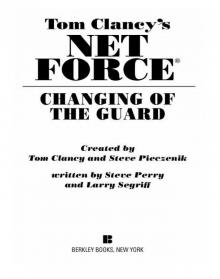 Changing of the Guard
Changing of the Guard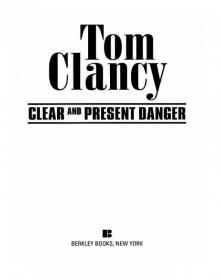 Clear and Present Danger
Clear and Present Danger Hounds of Rome
Hounds of Rome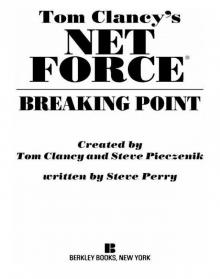 Breaking Point
Breaking Point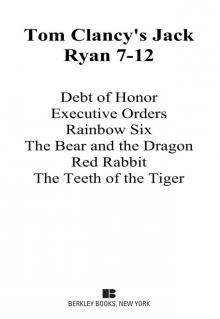 Tom Clancy's Jack Ryan Books 7-12
Tom Clancy's Jack Ryan Books 7-12 Full Force and Effect
Full Force and Effect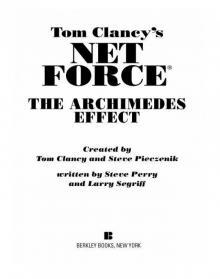 The Archimedes Effect
The Archimedes Effect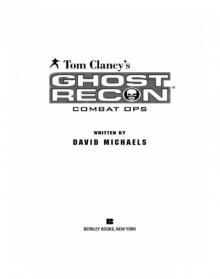 Combat Ops
Combat Ops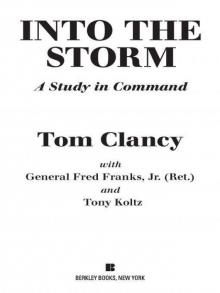 Into the Storm: On the Ground in Iraq
Into the Storm: On the Ground in Iraq Under Fire
Under Fire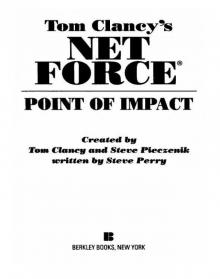 Point of Impact
Point of Impact Red Rabbit
Red Rabbit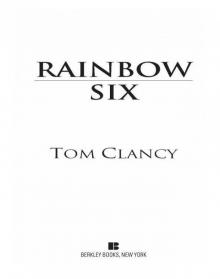 Rainbow Six
Rainbow Six The Hunt for Red October
The Hunt for Red October The Teeth of the Tiger
The Teeth of the Tiger Conviction (2009)
Conviction (2009)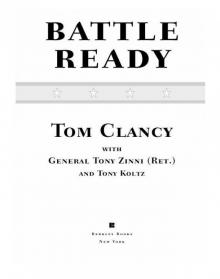 Battle Ready
Battle Ready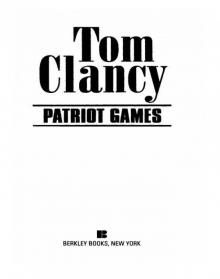 Patriot Games
Patriot Games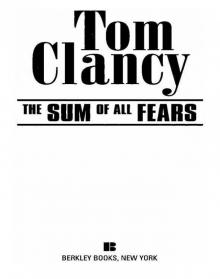 The Sum of All Fears
The Sum of All Fears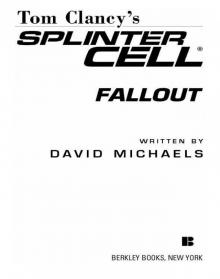 Fallout (2007)
Fallout (2007) Red Storm Rising
Red Storm Rising The Cardinal of the Kremlin
The Cardinal of the Kremlin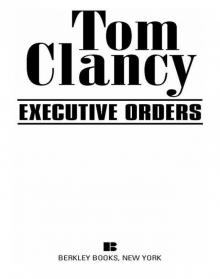 Executive Orders
Executive Orders Lincoln, the unknown
Lincoln, the unknown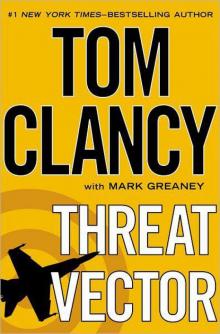 Threat Vector
Threat Vector The Hunted
The Hunted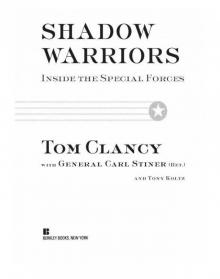 Shadow Warriors: Inside the Special Forces
Shadow Warriors: Inside the Special Forces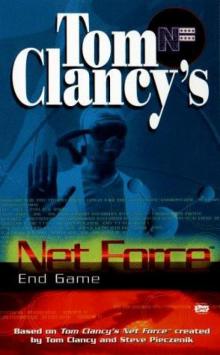 End Game
End Game Special Forces: A Guided Tour of U.S. Army Special Forces
Special Forces: A Guided Tour of U.S. Army Special Forces Locked On
Locked On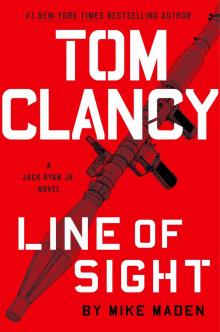 Line of Sight
Line of Sight Tom Clancy Enemy Contact - Mike Maden
Tom Clancy Enemy Contact - Mike Maden Fighter Wing: A Guided Tour of an Air Force Combat Wing
Fighter Wing: A Guided Tour of an Air Force Combat Wing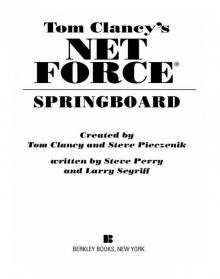 Springboard
Springboard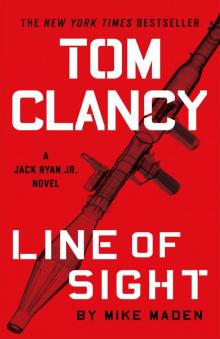 Line of Sight - Mike Maden
Line of Sight - Mike Maden EndWar
EndWar Dead or Alive
Dead or Alive Tom Clancy Support and Defend
Tom Clancy Support and Defend Checkmate
Checkmate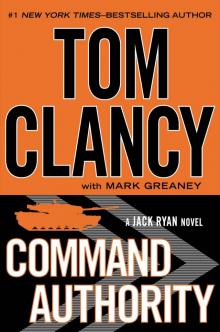 Command Authority
Command Authority Carrier: A Guided Tour of an Aircraft Carrier
Carrier: A Guided Tour of an Aircraft Carrier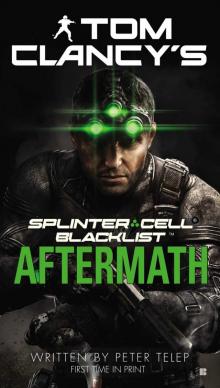 Blacklist Aftermath
Blacklist Aftermath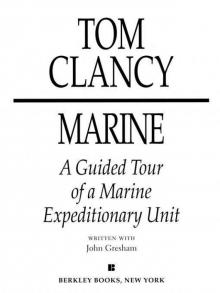 Marine: A Guided Tour of a Marine Expeditionary Unit
Marine: A Guided Tour of a Marine Expeditionary Unit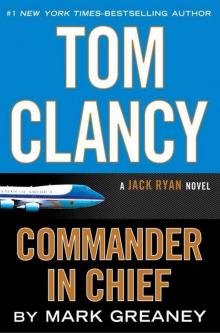 Commander-In-Chief
Commander-In-Chief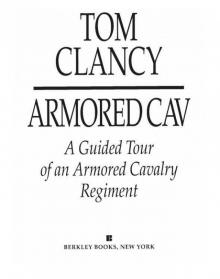 Armored Cav: A Guided Tour of an Armored Cavalry Regiment
Armored Cav: A Guided Tour of an Armored Cavalry Regiment Tom Clancy's Jack Ryan Books 1-6
Tom Clancy's Jack Ryan Books 1-6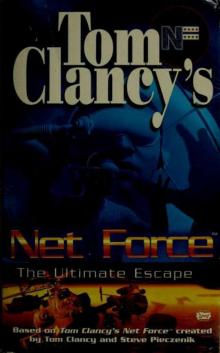 The Ultimate Escape
The Ultimate Escape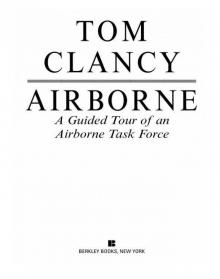 Airborne: A Guided Tour of an Airborne Task Force
Airborne: A Guided Tour of an Airborne Task Force Debt of Honor
Debt of Honor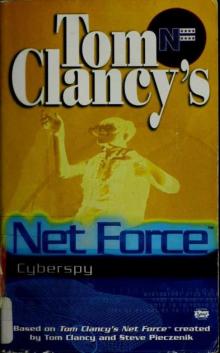 Cyberspy
Cyberspy Point of Contact
Point of Contact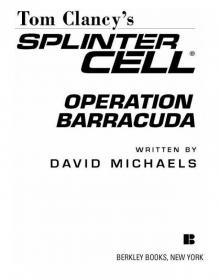 Operation Barracuda (2005)
Operation Barracuda (2005)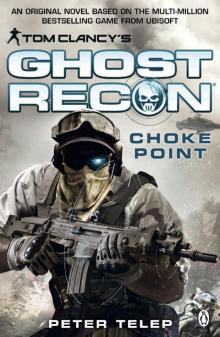 Choke Point
Choke Point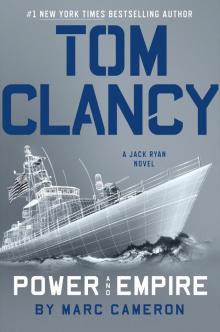 Power and Empire
Power and Empire Every Man a Tiger: The Gulf War Air Campaign
Every Man a Tiger: The Gulf War Air Campaign Endgame (1998)
Endgame (1998)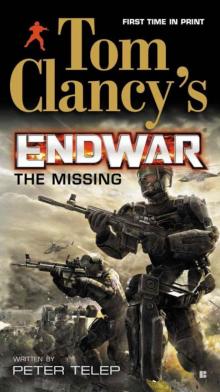 EndWar: The Missing
EndWar: The Missing Splinter Cell (2004)
Splinter Cell (2004) The Great Race
The Great Race True Faith and Allegiance
True Faith and Allegiance Deathworld
Deathworld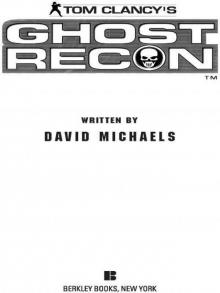 Ghost Recon (2008)
Ghost Recon (2008) Duel Identity
Duel Identity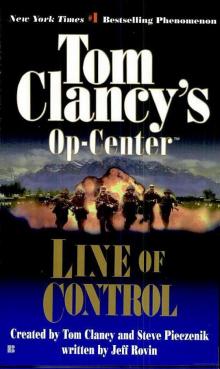 Line of Control o-8
Line of Control o-8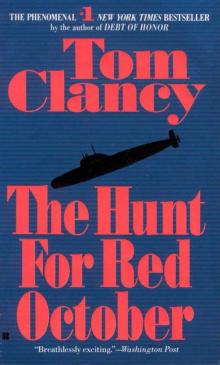 The Hunt for Red October jr-3
The Hunt for Red October jr-3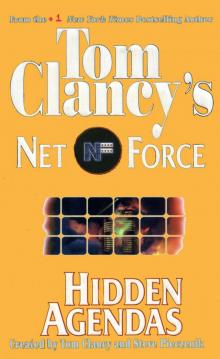 Hidden Agendas nf-2
Hidden Agendas nf-2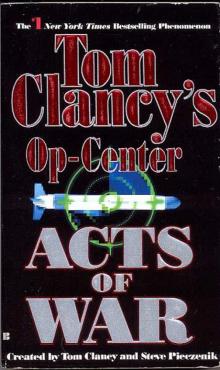 Acts of War oc-4
Acts of War oc-4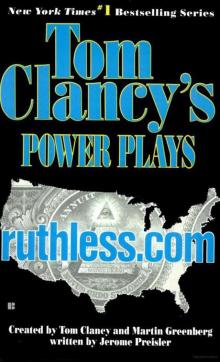 Ruthless.Com pp-2
Ruthless.Com pp-2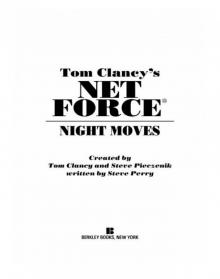 Night Moves
Night Moves The Hounds of Rome - Mystery of a Fugitive Priest
The Hounds of Rome - Mystery of a Fugitive Priest Into the Storm: On the Ground in Iraq sic-1
Into the Storm: On the Ground in Iraq sic-1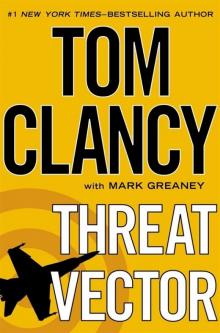 Threat Vector jrj-4
Threat Vector jrj-4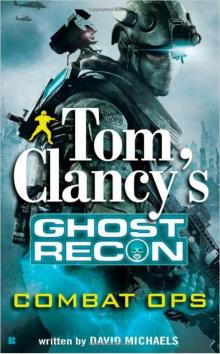 Combat Ops gr-2
Combat Ops gr-2 Virtual Vandals nfe-1
Virtual Vandals nfe-1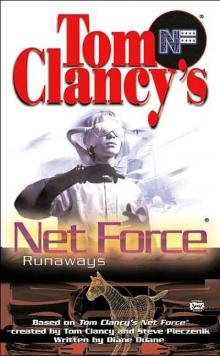 Runaways nfe-16
Runaways nfe-16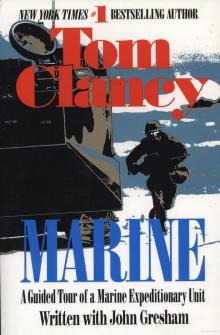 Marine: A Guided Tour of a Marine Expeditionary Unit tcml-4
Marine: A Guided Tour of a Marine Expeditionary Unit tcml-4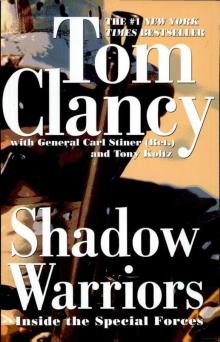 Shadow Warriors: Inside the Special Forces sic-3
Shadow Warriors: Inside the Special Forces sic-3 Jack Ryan Books 1-6
Jack Ryan Books 1-6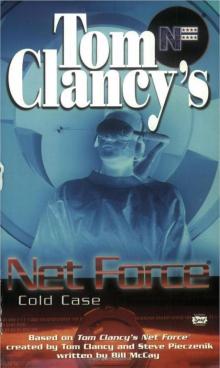 Cold Case nfe-15
Cold Case nfe-15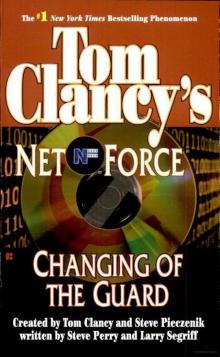 Changing of the Guard nf-8
Changing of the Guard nf-8 Splinter Cell sc-1
Splinter Cell sc-1 Battle Ready sic-4
Battle Ready sic-4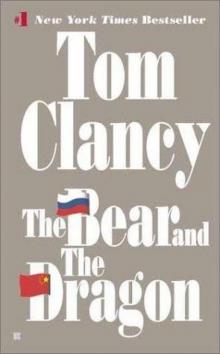 The Bear and the Dragon jrao-11
The Bear and the Dragon jrao-11 Fighter Wing: A Guided Tour of an Air Force Combat Wing tcml-3
Fighter Wing: A Guided Tour of an Air Force Combat Wing tcml-3 Patriot Games jr-1
Patriot Games jr-1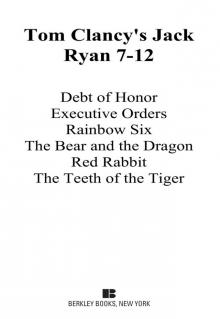 Jack Ryan Books 7-12
Jack Ryan Books 7-12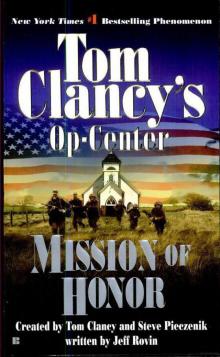 Mission of Honor o-9
Mission of Honor o-9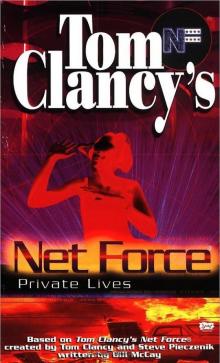 Private Lives nfe-9
Private Lives nfe-9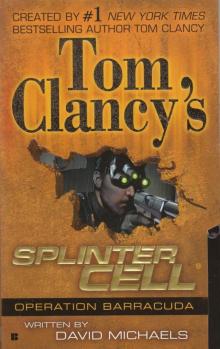 Operation Barracuda sc-2
Operation Barracuda sc-2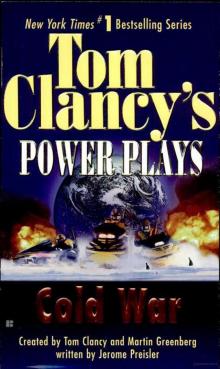 Cold War pp-5
Cold War pp-5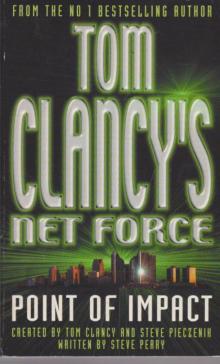 Point of Impact nf-5
Point of Impact nf-5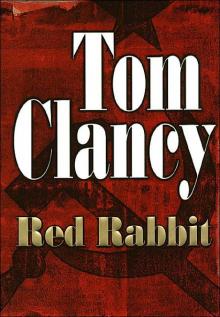 Red Rabbit jr-9
Red Rabbit jr-9 The Deadliest Game nfe-2
The Deadliest Game nfe-2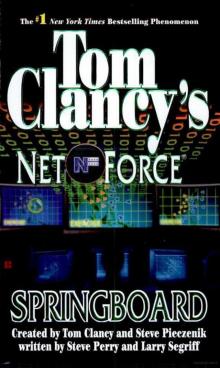 Springboard nf-9
Springboard nf-9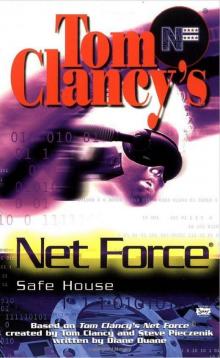 Safe House nfe-10
Safe House nfe-10 EndWar e-1
EndWar e-1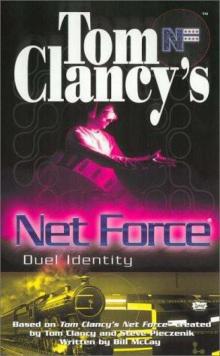 Duel Identity nfe-12
Duel Identity nfe-12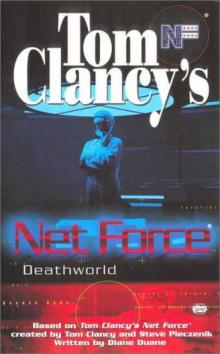 Deathworld nfe-13
Deathworld nfe-13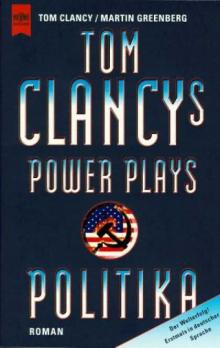 Politika pp-1
Politika pp-1 Rainbow Six jr-9
Rainbow Six jr-9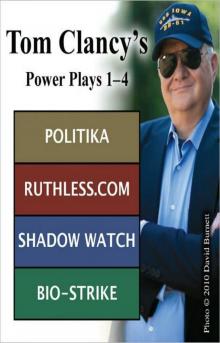 Tom Clancy's Power Plays 1 - 4
Tom Clancy's Power Plays 1 - 4 Endgame sc-6
Endgame sc-6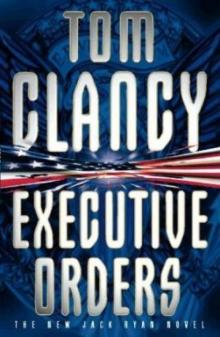 Executive Orders jr-7
Executive Orders jr-7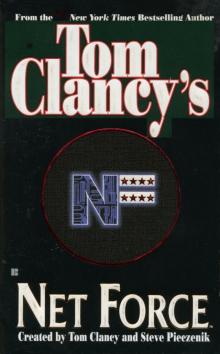 Net Force nf-1
Net Force nf-1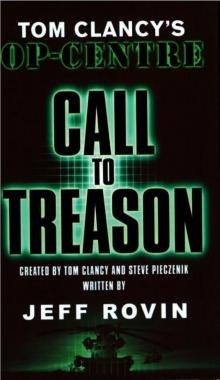 Call to Treason o-11
Call to Treason o-11 Locked On jrj-3
Locked On jrj-3 Against All Enemies
Against All Enemies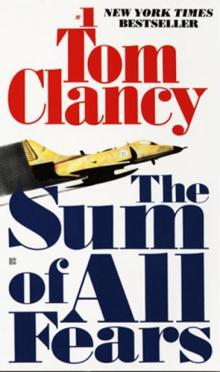 The Sum of All Fears jr-7
The Sum of All Fears jr-7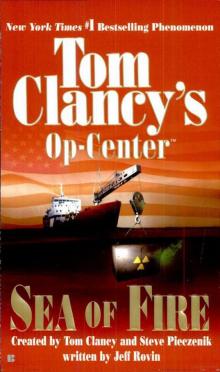 Sea of Fire o-10
Sea of Fire o-10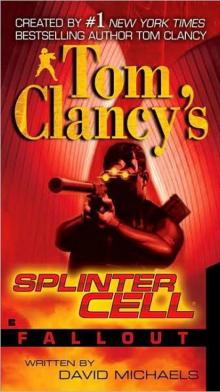 Fallout sc-4
Fallout sc-4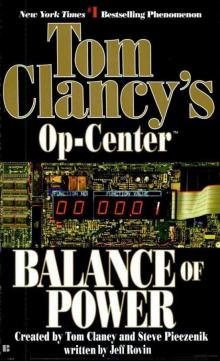 Balance of Power o-5
Balance of Power o-5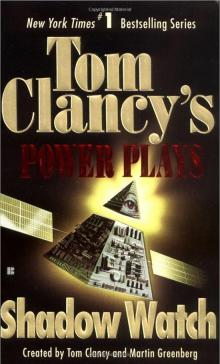 Shadow Watch pp-3
Shadow Watch pp-3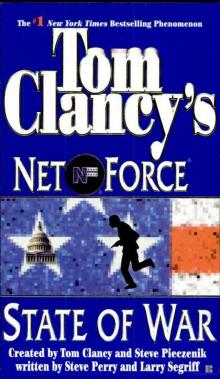 State of War nf-7
State of War nf-7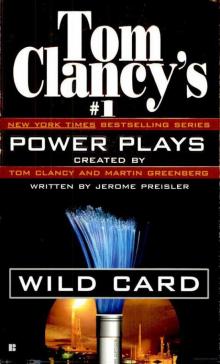 Wild Card pp-8
Wild Card pp-8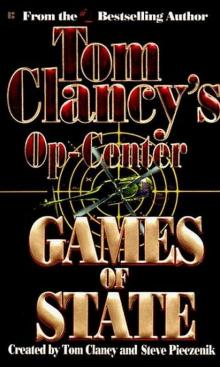 Games of State o-3
Games of State o-3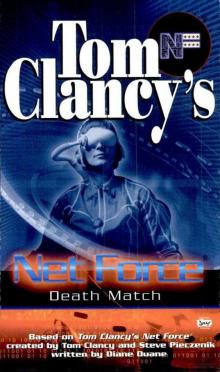 Death Match nfe-18
Death Match nfe-18 Against All Enemies mm-1
Against All Enemies mm-1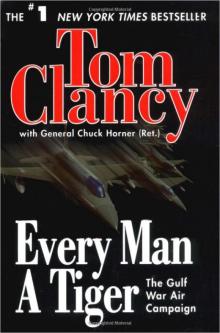 Every Man a Tiger: The Gulf War Air Campaign sic-2
Every Man a Tiger: The Gulf War Air Campaign sic-2 Cybernation nf-6
Cybernation nf-6 Support and Defend
Support and Defend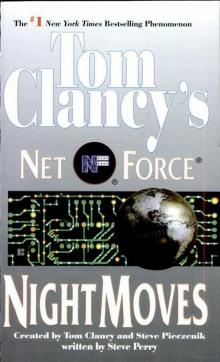 Night Moves nf-3
Night Moves nf-3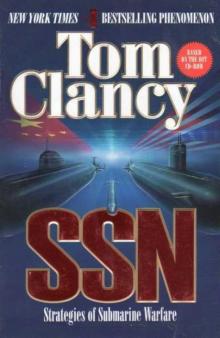 SSN
SSN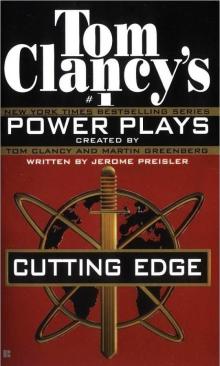 Cutting Edge pp-6
Cutting Edge pp-6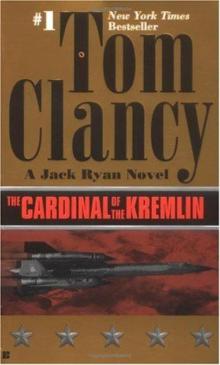 The Cardinal of the Kremlin jrao-5
The Cardinal of the Kremlin jrao-5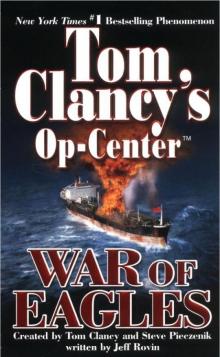 War of Eagles o-12
War of Eagles o-12 Op-Center o-1
Op-Center o-1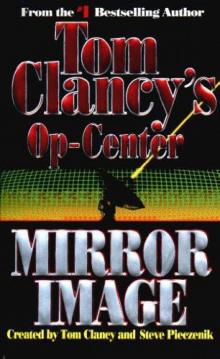 Mirror Image o-2
Mirror Image o-2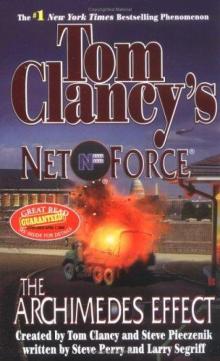 The Archimedes Effect nf-10
The Archimedes Effect nf-10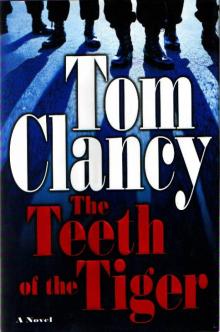 Teeth of the Tiger jrj-1
Teeth of the Tiger jrj-1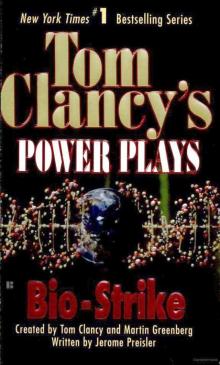 Bio-Strike pp-4
Bio-Strike pp-4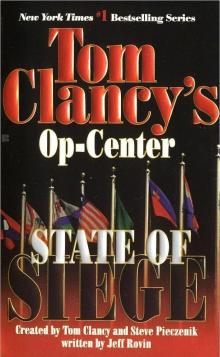 State of Siege o-6
State of Siege o-6 Debt of Honor jr-6
Debt of Honor jr-6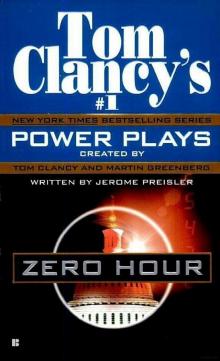 Zero Hour pp-7
Zero Hour pp-7 Ghost Recon gr-1
Ghost Recon gr-1 Command Authority jr-10
Command Authority jr-10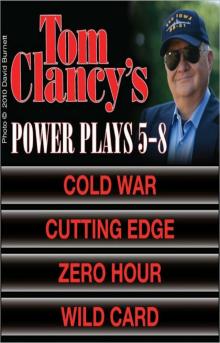 Tom Clancy's Power Plays 5 - 8
Tom Clancy's Power Plays 5 - 8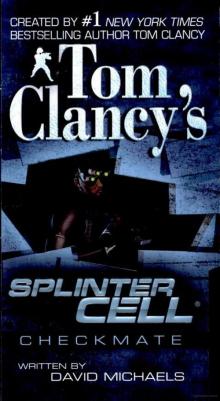 Checkmate sc-3
Checkmate sc-3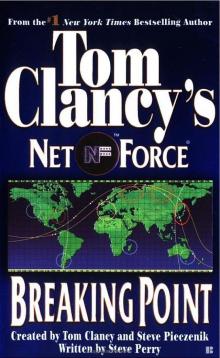 Breaking Point nf-4
Breaking Point nf-4 Gameprey nfe-11
Gameprey nfe-11 The Hunted e-2
The Hunted e-2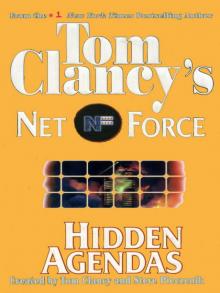 Hidden Agendas
Hidden Agendas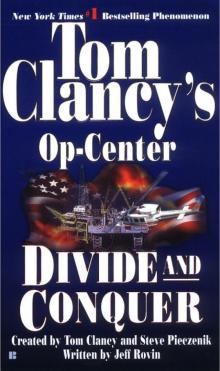 Divide and Conquer o-7
Divide and Conquer o-7